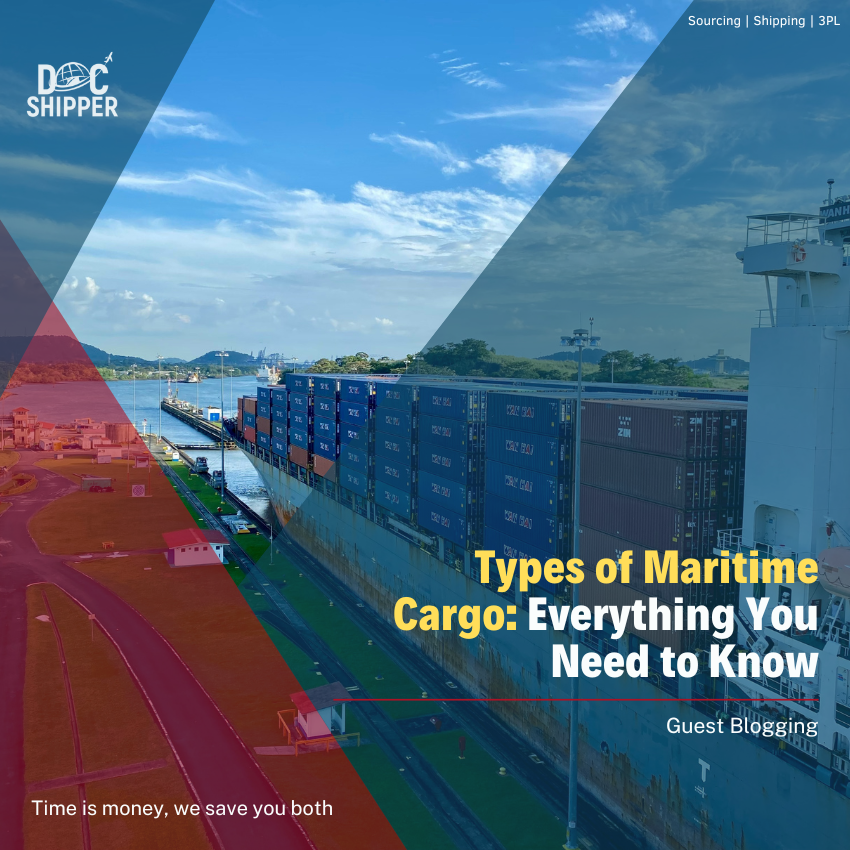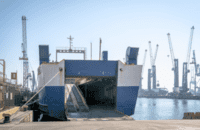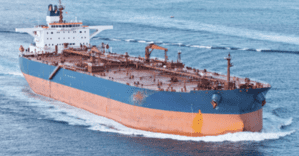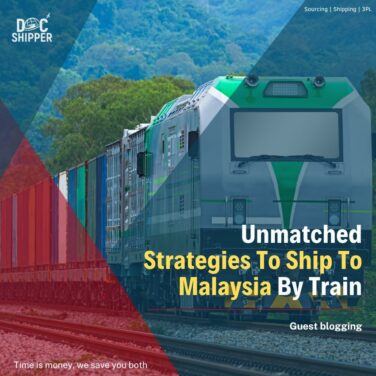As a product supplier, you’ll have to deal with the maritime industry, sooner or later. This sector plays an important role in facilitating global trade and connections between different markets.
To better prepare yourself to engage with this industry, it is essential to know its different aspects, whether the benefits for your business or the different maritime cargo types. Having this information in hand will help you optimize your logistics and transport strategy and ensure a safe delivery of your items.
What is Maritime Cargo Transportation?
Maritime cargo transportation means carrying products from one place to another through sea or ocean.
These are usually large cargoes that stow different products including petroleum, gas, water, juices, electronics, garments, machinery, furniture, footwear, vehicles, and more.
These cargoes are transported via carrier ships or vessels designed to accommodate different types of products.
For example, liquid commodities are transported in tanker ships with large oil tankers.
Why Should You Choose Maritime Cargo Transportation For Your Business?
Here’s how your business can benefit from maritime cargo transportation:
- Variety of Options: According to a 2022 survey published by Statista, about 58,000 cargo ships operate worldwide. It results in extensive free market competition between shipping companies, providing plenty of options to choose the best maritime transport for your business needs.
- Large Capacity: Maritime cargo transport is ideal for shipping products internationally. The vessels that carry these cargoes have a higher capacity than other transports. They can transport large-volume products in high tonnages.
- Cheaper Costs: Maritime cargo is less costly than land or air freight. This is because land or air freight mediums transport cargo more quickly.
- Versatility: Maritime logistics can accommodate different categories of cargo. The maritime cargo carriers are designed to transport and maintain them accordingly throughout the shipping phase. For example, reefer ships can carry perishable goods like edible items or pharmaceuticals that need refrigeration.
- Sustainability: Maritime cargo is the best choice for businesses that prefer sustainable practices. These vessels have a lower carbon footprint than other transport mediums. They emit about 10-40 grams of carbon dioxide, much less than the carbon emission of air freight at about 500 grams.
DocShipper Info
DocShipper info : While there are multiple ways to move your goods from one point to another, sea transportation is a cost-effective and safe option, especially if you are shipping large quantities. For more information about our sea freight services, do not hesitate to request a quote that is available within 24 hours.
Types of Maritime Cargo
Sea freight involves a wide range of goods being transported across the oceans of the world, which answers the global demand for a variety of products.
Maritime cargoes are classified according to the type of product being transported, and each requires specific handling and transportation methods to ensure safe and efficient delivery. Let’s take a look at the different types of cargo that exist in the shipping world.
Bulk Cargo |
Bulk cargo is a maritime cargo type where unpackaged commodities are transported in large quantities via carriers. Bulk carriers carry goods like coal, grains, oil, or chemicals. There are two types of bulk cargo: dry cargo and liquid cargo. |
|
Dry Cargo |
Dry cargo refers to raw materials shipped to construction companies and production plants. Common examples of dry bulk cargo include cement, chemicals, coals, grains, iron ores, minerals, salt, and sand. |
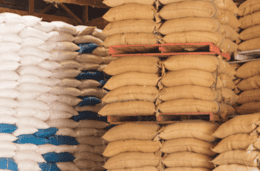 |
Liquid Cargo |
Liquid bulk refers to the commodities stored in large oil tankers. These ships usually carry chemicals (acids, industrial chemicals, and solvents), petroleum (diesel and liquefied natural gasses), and essentials used for food preparation and consumption (juices, vegetable oils, and water). |
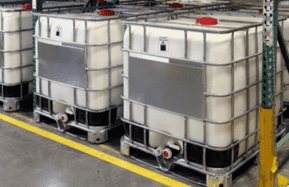 |
General Cargo |
General or break bulk cargo is the most common type of maritime cargo. Here, the goods are transported in bags, boxes, crates, drums, or barrels in defined loads. General cargo usually includes electronics, footwear, furniture, garments, machinery, etc. The packaging varies according to the product type. For example, drums are suitable for carrying liquid products such as chemicals, fresh juices, and water. |
 |
Containerized Cargo |
In the containerized cargo, goods are stored in large intermodal containers. These containers occupy substantial space in the ships, allowing transportation of maximum products. Containerized cargoes are used to carry large-size products like heavy machinery and industrial equipment. |
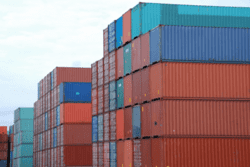 |
Neo-Bulk Cargo |
Neo bulk cargo refers to products that require a certain capacity and facilities for transportation. Some neo-bulk cargo products include edible items, lumber, paper, steel coils, and vehicles. These products are counted and transferred to ports as individual units. |
 |
Refrigerated Cargo |
The cargo includes perishable goods that need to be refrigerated. These usually consist of pharmaceuticals, food items like dairy products (butter, cheese, etc.), fruits, meat, seafood, and vegetables. The refrigerated cargo is stowed in reefer ships that provide cooling to edible products and pharmaceuticals. They can also be stowed in refrigerated containers that are connected to the reefer ship’s main power supply to maintain the temperature for the cargo throughout shipping. |
 |
Wheeled Cargo |
Wheeled cargo transports vehicles like cars, motorbikes, buses, trucks, and all of their components. The cargo is transported via roll-on, roll-off vessels specifically designed to carry vehicles. |
 |
Heavy-Lift Cargo |
Heavy-lift cargo mainly transports industrial products like construction machinery, storage tanks, wind turbines, etc. Some heavy-lift cargo vessels even have cranes installed on them. |
 |
DocShipper Tip
DocShipper Advice : When dealing with various types of items, it is crucial to know which packaging is suitable for each of them. To ensure an efficient transport process, you can consult a logistics company to navigate regulations easily and optimize your transportation process. Contact us via WhatsApp, and one of our experts will reach out to you in less than 24 hours.
Maritime Cargo Carriers
Now we know that a wide variety of goods can be transported across the ocean. For every specific cargo, there is a special ship, each of which plays an important role in the industry. Let’s discover the different options that exist and their unique features.
Feeder Ships
Feeder ships are medium-size cargo freights capable of transporting feeders. These shi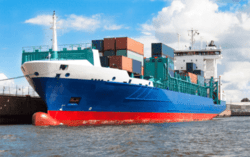
These ships are smaller than traditional ships. They carry container cargo from small ports and transport them to central container terminals. Large ships can carry the containers from there.
Livestock Carriers
The livestock carriers are ships designed to export domesticated animals like cattle, goats, and sheep through the sea.These vessels have animal pens installed on internal or external decks of the vessels.
The internal decks rely on ventilation through sophisticated systems while external decks provide ventilation to animals via natural air.
Reefer Ships
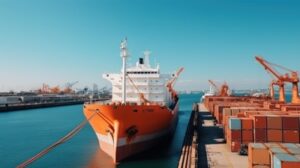
On this ship, edible products or pharmaceuticals are stored in refrigerated containers. This preserves their freshness and quality throughout the transportation process.
These refrigerated containers are connected to the main power supply in the reefer ships.
Roll-on, Roll-off Ships
The roll-on, roll-off ships are vessels specifically designed for transporting wheeled cargo.
The vessels differ from the traditional cargo carriers as they have ramps and bridges to easily stow cars into the parking spaces.
Tankers
Tankers carry bulk liquids like crude oil, petroleum, gas, etc.
These are large ships with lengths ranging from 200 meters to 415 meters. The number of barrels can range from thousands to millions.
The length and capacity vary in each vessel. For example, the Aframax vessel has a deadweight between 80,000 and 120,000 metric tonnes.
Some famous large tankers include Panamax and Suezmax. These are designed to transport oil through the Panama Canal and Suez Canal respectively.
Understanding the Cargo Process
Here’s how the usual cargo process goes when you’re receiving a product:
- You first need to sign an agreement with a shipper to receive the product. The shipper can be the product manufacturer or a distributor who sends consignment to you at your destination.
- The shipper hands over the products to a freight forwarder. At the forwarder’s warehouse, products go through inspection and are delivered to the carrier.
- The carrier is responsible for handling the cargo and delivering them to the customer.
- The customs inspect the products at the destination and allow entry after clearance.
- The cargo is then delivered to your warehouse.
DocShipper Alert
DocShipper Alert : As an international freight forwarder, we assist you during each step of your logistics process. Any service you need, we provide it. From sourcing to delivery, our experts are here to answer your questions and give you the best experience in transporting your goods from one point to another. Do not hesitate to contact us and receive a quote in less than 24 hours.
Accessing the Maritime Cargo Expenses
It’s important to know the expenses incurred in maritime cargo transportation. You have to pay the consigner the amount before the consigner pays the supplier for shipping the cargo.
The container shipping costs vary according to:
- Size of the cargo
- Type of vessel transporting the cargo
- Distance between pickup and dropoff
- Customs charges at the destination
- Shipping time duration
Note: Shipping rates can spike during peak seasons and dip down during off-seasons.
Best Practices for Receiving Maritime Cargo
As a business, you should consider the following factors if you want to receive products in excellent condition:
- Research and work with a reputable supplier who sends your cargo through a reliable shipping company. The carrier should be capable of handling the products with great care.
- Ensure that the shipper and carrier have signed a bill of lading. This bill contains all the details of the products that are being transported and confirms that the ownership of the goods has been transferred from the supplier to the carrier. As a consignee, you endorse it and pay for the cargo accordingly.
- Perform a thorough inspection of the goods once you receive them.
Conclusion
Since the maritime industry is evolving and gaining even more importance as time passes, you are likely to come across sea transportation if you are working in the logistics field. Knowing how to differentiate the types of maritime cargoes is a starting point to optimize all of your operations.
Researching maritime cargo services is a no-brainer if you plan on using them. As your research most likely starts from ‘types of maritime cargo’, we hope this article was able to help you out.
FAQ | Types of Maritime Cargo: Everything You Need to Know
Read more
Looking for more? These articles might interest you:
DocShipper info: Do you like our article today? For your business interest, you may like the following useful articles :
Need Help with Logistics
or Sourcing ?
First, we secure the right products from the right suppliers at the right price by managing the sourcing process from start to finish. Then, we simplify your shipping experience - from pickup to final delivery - ensuring any product, anywhere, is delivered at highly competitive prices.

Fill the Form
Prefer email? Send us your inquiry, and we’ll get back to you as soon as possible.
Contact us

